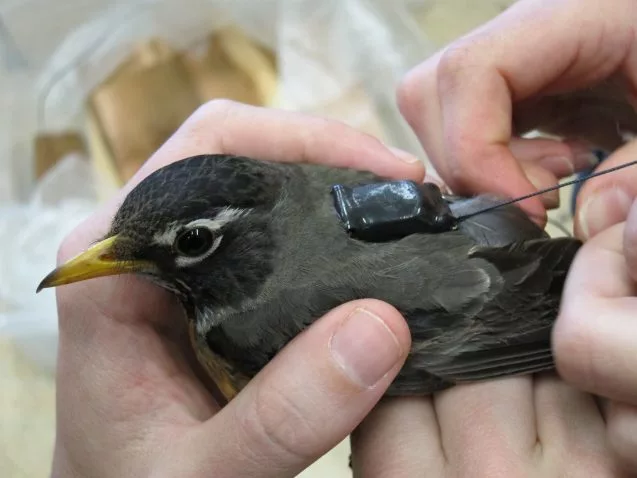Climate change threatens to shake up the lifestyles of many animals around the world and a new study has revealed that for the American robin these wheels are already very much in motion. Scientists tagged the songbirds with GPS units to track their migration patterns and found that they are embarking on their annual Arctic-bound journey earlier each decade, with a shift in snow melt conditions a big part of the reason why.
American robins spend most of the year scattered around the US and Mexico, but each time spring rolls around they pack up and head north towards Canada and Alaska for a little summer vacation. There, they do their best to find a mate, put together a nest and raise a family, fattening up on insects, berries and worms while they’re at it.
With these warmer seasons in the Arctic kicking off earlier due to climate change, scientists at Columbia University began to wonder what impact this would have on the migration habits of the American robin. To find some answers, the research team turned to Canada’s Slave Lake, which acts as a pit stop for the birds on their journey north.
Researchers have been monitoring the migration patterns of birds at Slave Lake for a quarter of a century, with visual surveys and netting censuses revealing that robins are heading north around five days earlier per decade since 1994, or a total of 12 days earlier now than they did back then. To understand the reasons behind this, the Columbia researchers took things one step further and equipped 55 robins with tiny GPS devices.

This GPS data of the birds’ movements was able to be connected with weather data on temperatures, snow depth, winds, rain and other elements that could impact their migration behavior. This analysis revealed that the robins starting moving north earlier when the conditions were warmer and drier, with snow coverage a particularly important factor.
“The one factor that seemed the most consistent was snow conditions and when things melt. That’s very new,” says lead author Ruth Oliver. “We’ve generally felt like birds must be responding to when food is available – when snow melts and there are insects to get at – but we’ve never had data like this before.”
The team says this is the first study to reveal how environmental conditions are shifting migration patterns along this route. This kind of information can help them develop predictive models of how the birds will respond as the climate continues to change.
“Because the timing of migration can indirectly influence the reproductive success of an individual, understanding controls over the timing of migratory events is important,” Natalie Boelman, a coauthor on the paper.
From here, the team hopes to map out the birds’ entire migration path, rather than from a midway point, using tissue samples collected during the GPS fitting that could reveal clues about their earlier whereabouts.
The research was published in the journal Environmental Research Letters.
Source: Columbia University





